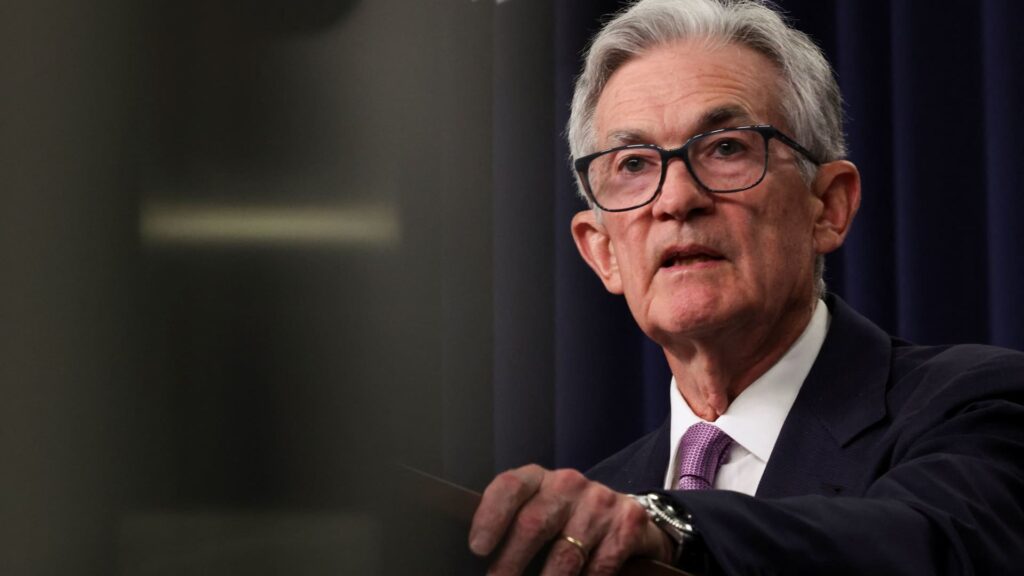
Federal Reserve Chairman Jerome Powell unveiled the latest buzzwords to describe monetary policy and “recalibrate” policy at a critical moment for the central bank.
At a news conference after Wednesday’s meeting of the Open Market Committee, Powell used variations of the word no less than eight times to try to explain why the Fed took the unusual step of cutting interest rates by a half-percentage point in the absence of significant weakness in the economy.
“This recalibration of our policy stance will help maintain the strength of the economy and the labor market and will continue to drive further progress on inflation as we begin to adopt a more neutral stance,” Powell said.
Financial markets were less sure what to make of the chairman’s message immediately after the meeting.
Asset prices surged on Thursday, however, as investors believed Powell’s comments that the unusually large move was not a response to a sharp economic slowdown. Rather, it is an opportunity to “recalibrate” Fed policy from a strict focus on inflation to a broader effort to ensure that recent weakness in the labor market does not spiral out of control.
The Dow Jones Industrial Average and S&P 500 jumped to new highs in trading on Thursday after wild swings on Wednesday.
Tom Porcelli, chief U.S. economist for fixed income at PGIM, said: “Policy has been adjusted in response to significantly higher inflation. With inflation now close to target, the Fed can unwind some of the aggressive tightening policies they implemented.”
“It does allow him to push the narrative that this easing cycle is not about getting us into a recession but about extending the expansion,” he added. “I think that’s a very powerful idea. It’s something we Something I always hoped he could do.”
Powell’s catchphrase
Powell has repeatedly described the Fed’s policy or economic views, but the results have not been ideal.
In 2018, his description of efforts to reduce bond holdings as “autopilot” and his assessment that a series of rate hikes that same year took the Fed further from a neutral rate sparked a rally from markets.
More famously, he insisted that a spike in inflation in 2021 would be “transitory,” ultimately causing the Fed to be so slow on policy that it had to implement a series of three-quarters of a percentage point hikes to bring inflation down.
But markets expressed confidence in Powell’s latest assessment, despite that record and signs of some cracks in the economy.

Michael Feroli, chief U.S. economist at JPMorgan Chase & Co., said: “In other cases, a larger move might convey greater concerns about economic growth, but Powell has repeatedly emphasized that this is basically a happy event. “Furthermore, if policies are done well, the economy should return to a favorable position over time. “
Feroli still expects the Fed will have to follow up Wednesday’s action with a similar-sized move at its Nov. 6-7 meeting unless the labor market reverses a slowdown that began in April.
There was some good news on the employment front on Thursday, with the Labor Department reporting that weekly jobless claims fell to 219,000, the lowest level since May.
unusual decline
The half-percentage point rate cut, or 50 basis points, is notable because it is the first time the Fed has gone beyond the traditional quarter-percentage point cut in the event of an imminent recession or crisis.
While Powell doesn’t believe the move is compensation for not cutting interest rates at the July meeting, speculation on Wall Street is that the central bank is indeed playing catch-up to some extent.
“It’s probably a matter of him feeling like they’re a little behind,” said Dan North, senior economist for North America at Allianz Trading. “A 50 basis point cut is very unusual. It’s been a long time coming and I think it’s probably The last labor market report gave him pause.”
Indeed, Powell has made no secret of his concerns about the labor market, saying on Wednesday that dealing with potential weakness was an important driver behind the readjustment.
Seth Carpenter, chief global economist at Morgan Stanley, wrote: “The Fed still believes that the economy is healthy and the labor market is solid, but Powell noted that now is the time to recalibrate policy.” “With this rate cut, Powell emphasized that and Demonstrating that the FOMC is willing to take incremental action or take greater action based on incoming data and the evolution of risks.”

Carpenter and others expect the Fed to now be able to reduce the increments in easing policy to a quarter of a percentage point for the rest of this year and the first half of 2025.
However, futures market traders will be pricing in more aggressiveness, which will result in a 25 basis point cut in November, only to return to 0.5 basis point in December, according to CME Group’s FedWatch indicator.
Bank of America economist Aditya Bhave pointed out that the changes in the Fed’s post-meeting statement included a reference to seeking “maximum employment,” which he believed showed that the Fed was prepared to maintain a positive attitude if the employment situation continues to deteriorate.
This also means recalibration can get tricky.
“We think the Fed will ultimately cut interest rates more early than it indicates,” Barvey said in a note. “The labor market is likely to remain tepid, and we think markets will push for another sharp increase in the fourth quarter.” reduce.”
